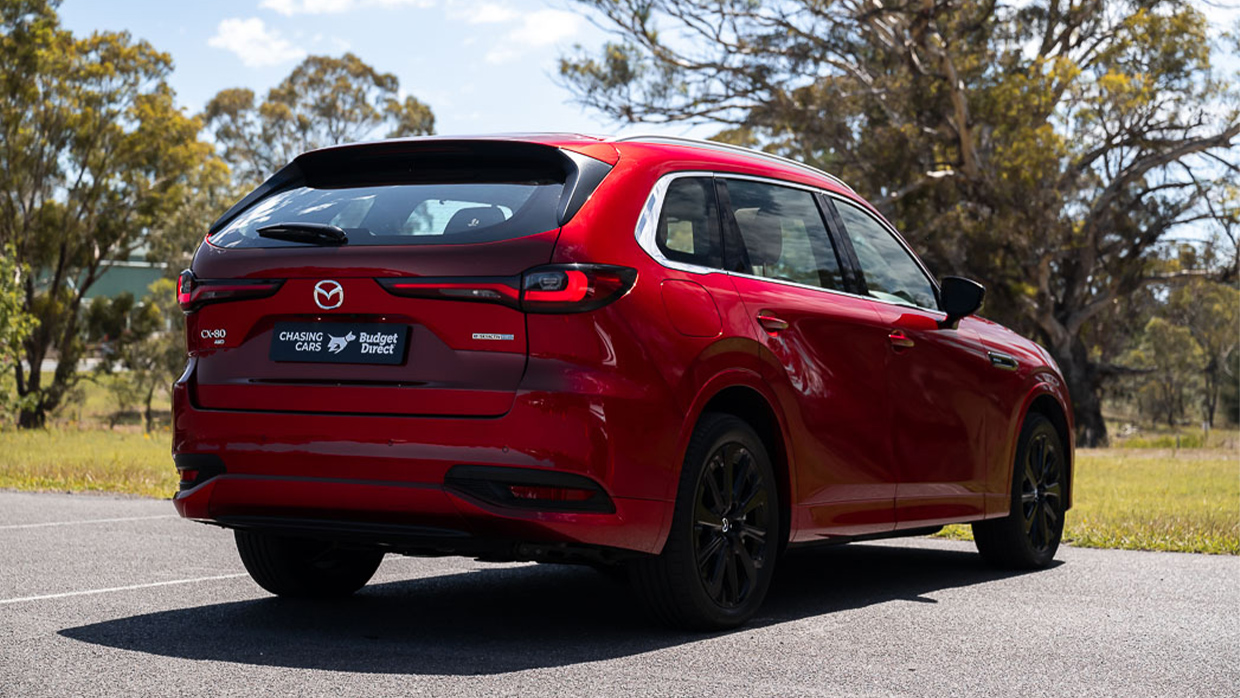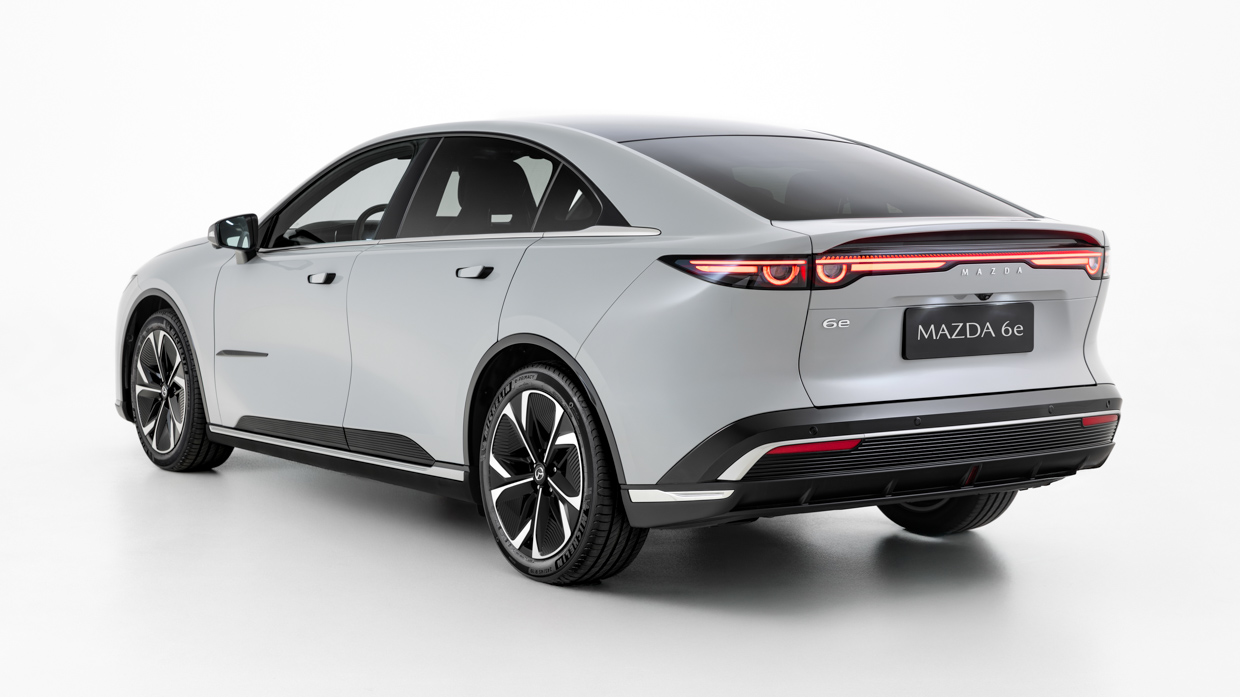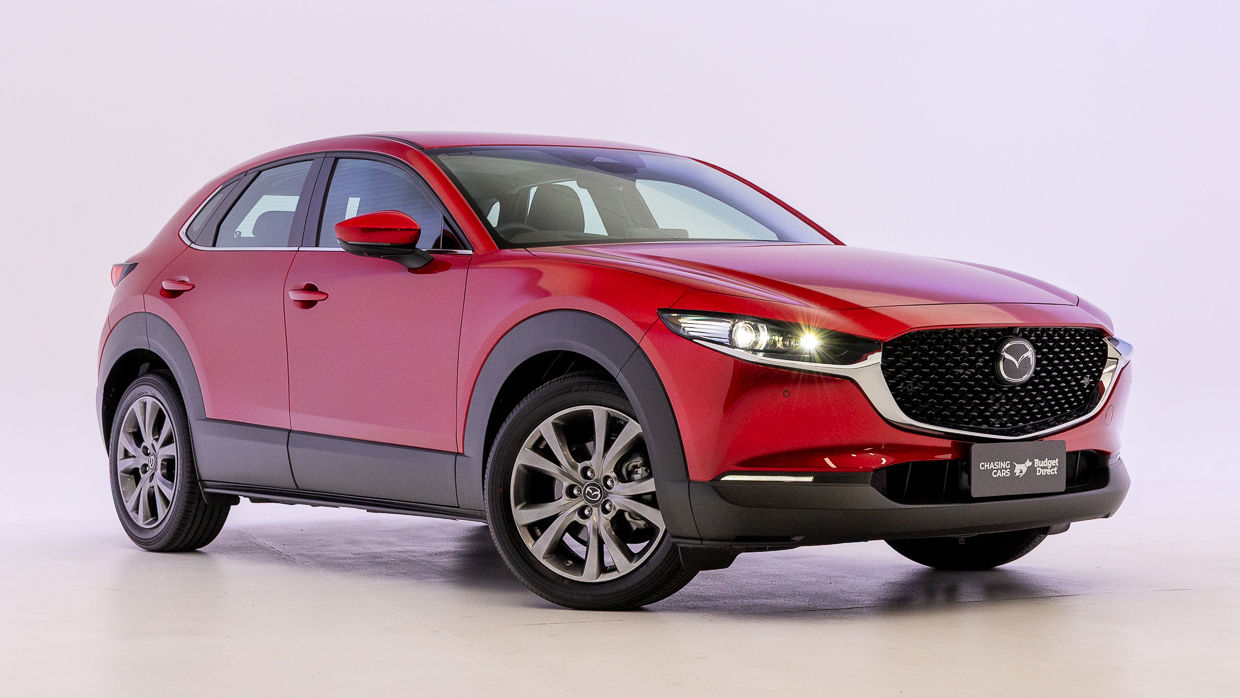-
Car Reviews
- All reviews
- Midsize SUVs
- Small cars
- Utes
- Small SUVs
- Large SUVs
- Large cars
- Sports SUVs
- Sports cars
- Vans
Latest reviews
- Car News
-
Car Comparisons
Latest comparisons
- Chasing Deals
Mazda is going on a product offensive after lukewarm Large Product Architecture reception to drive volume in key segments
Plucky Japanese brand Mazda hedged a sizeable bet on its Large Product Architecture which underpins ‘premium’ products such as the CX-60, CX-70, CX-80 and CX-90 — theoretically combining higher prices with higher margins and happier shareholders.
But in doing so, Mazda let products in key market segments — medium SUVs and sedans, plus smaller vehicles — stagnate and fall behind rivals.
Speaking to media at the 2025 Japan Mobility Show, representative director, senior managing executive officer and CFO Jeff Guyton admitted Mazda’s “product has gotten a bit old”.
At the show, Mazda exhibited the third-generation CX-5, its carbon-capture technology and a pair of Vision concepts that show the brand’s next-gen ‘Kodo’ design language on a large flagship and compact city car.
“This product, as it sits, is not intended to be a production car,” explains Guyton of the concepts, which look as though they could be made into a halo coupe-SUV and new-gen Mazda 2 or CX-3.
A new small car is something Mazda desperately needs. The CX-3, although still popular in Australia, is now over 10 years old, and the 2 went on sale here a year before that.
Even the CX-30, Mazda’s first ‘premium’ product, is now six years old, along with its 3 hatch counterpart. That makes them due for replacement next year in Mazda’s typical product cycles.
The new CX-5 is the next big release, expected to arrive in Australia with a carry-over 2.5L petrol four-cylinder (a non-turbo, remember) in the second half of 2026. Mazda is developing a bespoke hybrid system for CX-5, but that’s not likely until 2028 in Australia.
Also imminent is the Mazda 6e, an electric sedan that is a reskinned and retuned Chinese BEV from Changan-Deepal. This rear-drive EV is due in Australia next year.
Guyton adds that there’s more: “maybe some other things we haven’t talked about yet and won’t today… That’s all set to change quite quickly.” The logical next step is small cars, replacing the Mazda 2 and CX-3, and looking to renew the 3 hatch.
Also believed to be in development is an electric version of the new CX-5, with Mazda North America’s Tom Donnelly hinting at this to US News. Guyton spoke about Mazda’s ‘G Vectoring’ technology and how it levels up in an electric car with instant torque response.
“The four-wheel drive of an electric vehicle — a motor in the front, a motor in the back, for example — you apply the same [G Vectoring] logic to it, you can have the same results. So that prototype which I drove, in addition to being very powerful, was really good,” he said.
Additionally, Mazda confirmed that its new production facilities in Japan will be able to build combustion-engine, hybrid and electric cars on the same line — potentially unleashing the opportunity for an in-house battery-electric CX-5 to tackle the Tesla Model Y.
Coming back to Mazda’s ageing product, though, and sales remain strong in Australia. The CX-5 is the second best-seller in its class, just ahead of the Mitsubishi Outlander, the CX-3 is easily the most popular light SUV and the 3 hatch is third in the small-car class.
Combined, Mazda has sold less than half as many CX-60/70/80/90 models as it has ageing CX-5s so far in 2025.
Latest news
About Chasing cars
Chasing Cars reviews are 100% independent.
Because we are powered by Budget Direct Insurance, we don’t receive advertising or sales revenue from car manufacturers.
We’re truly independent – giving you Australia’s best car reviews.




